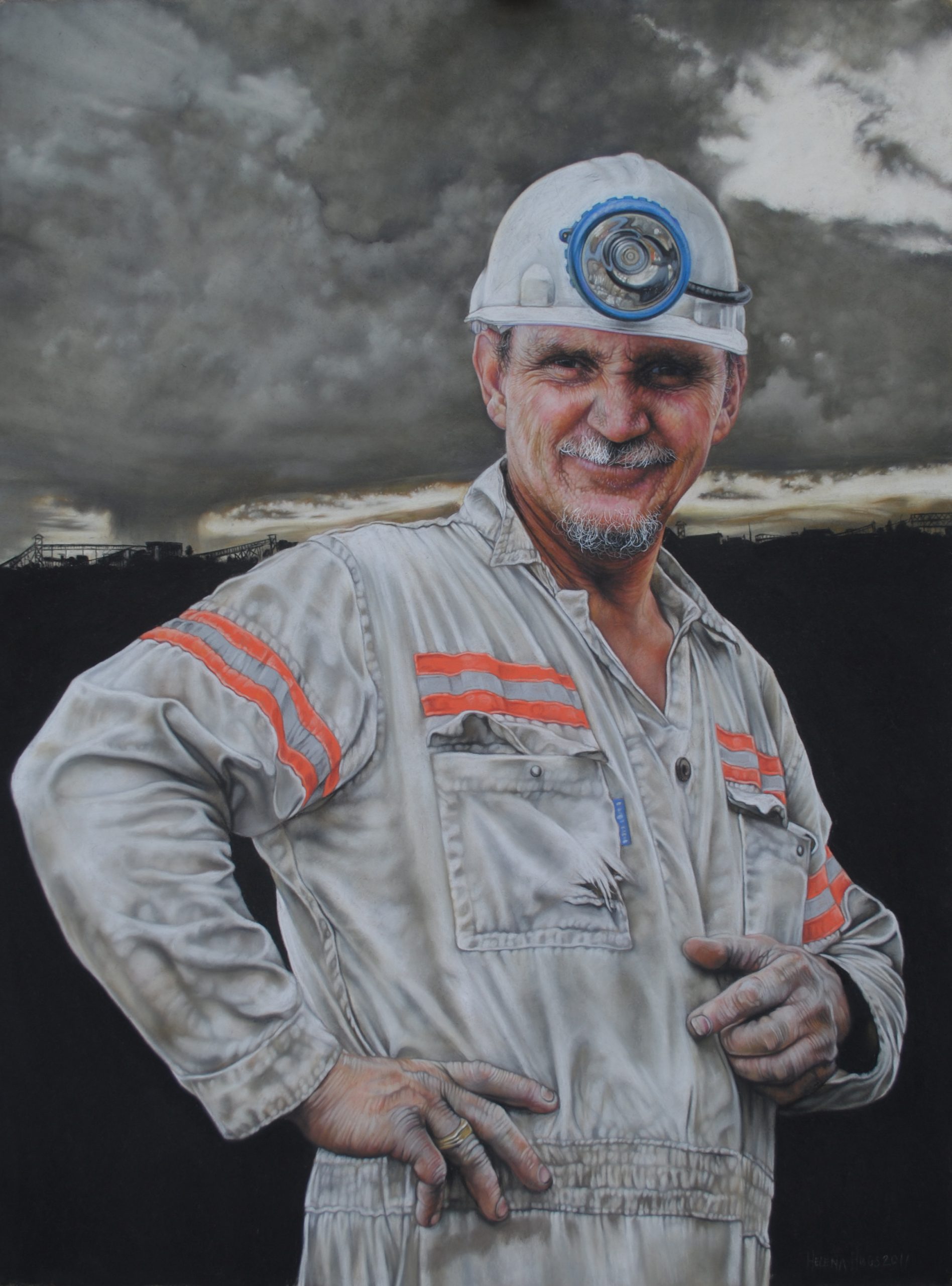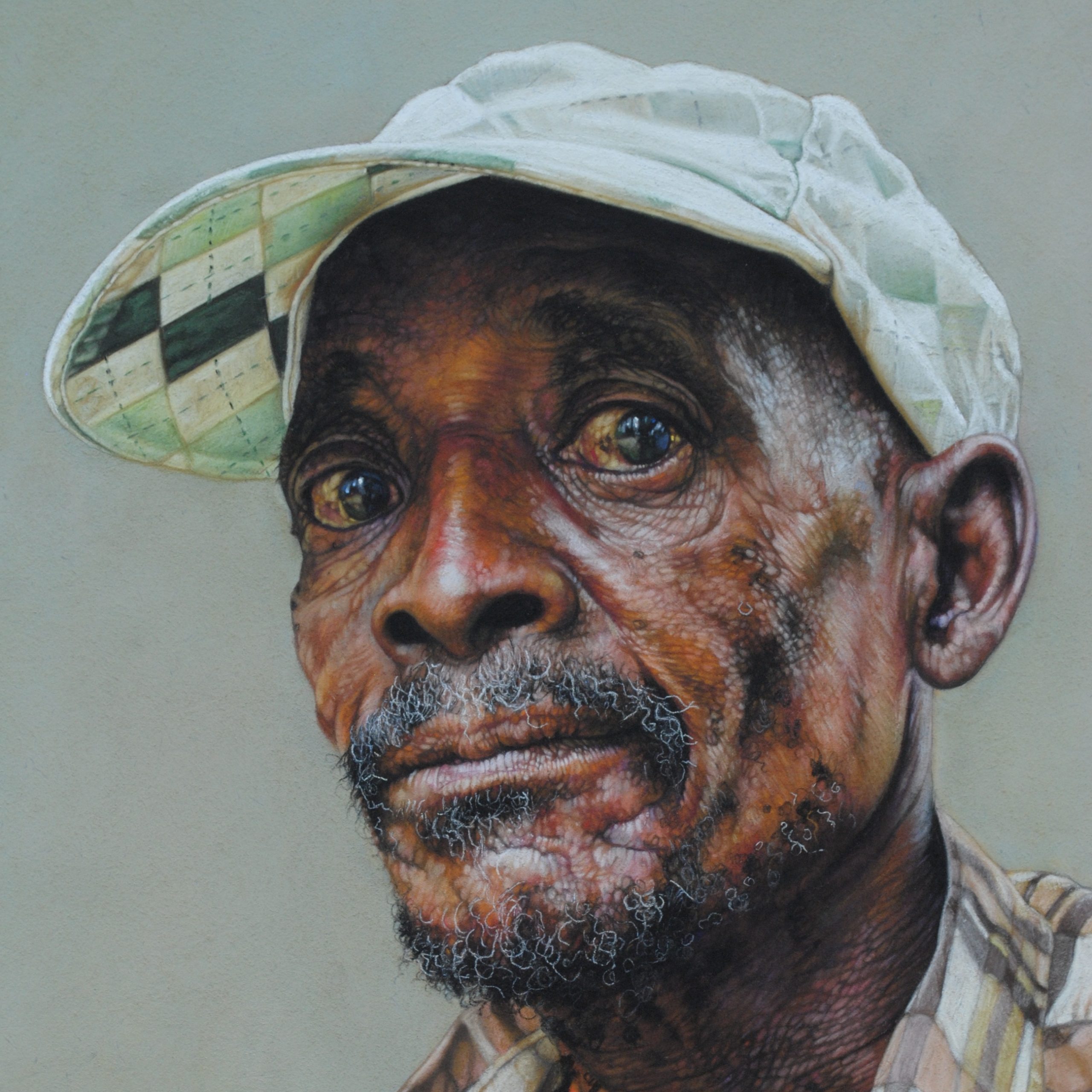Portret 2011

A Portrait, as a
likeness of a person’s appearance, can tell us something about an
individual’s identity, by providing us with information regarding
their character, personality, social position, career, age and sex,
within the context of a specific time in the life of that person.
In the same way, it is possible that a group of portraits may portray
the identity of a society, a nation or a country within a given time
period.
In an attempt to sketch the likeness of South Africa, Hugo offers us a group of likenesses which especially makes us aware of faces which we, depending on our own social status, may not always be aware of, though they form an important part of our landscape, economy, community and life.
In her portraits, Hugo tends to focus on the relationship between work and worker. Her portraits of workers in their working environments and of employment seekers, makes us aware of the importance of being employed. To have a job is an obvious necessity for survival and a way to overcome poverty and sometimes even crime, but psychologically it can have an even greater value. Research has show that a job can give a person a sense of value. Our personality and even our physiology may be influenced by the type of work we do. We obtain a strong clue to a person’s identity, when their type of employment are indicated in their portrait.
Looking at this exhibition in its entirety, we are made aware of a unified identity consisting of a multitude of talents and passions necessary for different kinds of work. It becomes a true South African portrait compounded from valuable individuals, each with their own pride and status.
Depending on our own point of reference, we experience these different likenesses as alien or in some of them, we recognize our own brother or sister.
There is always some kind of a relationship between sitter and artist. Excepting a posthumous portrait, both artist and sitter are present during at least a portion of the creation process. It then stands to reason that there was a degree of interaction between the artist and the individuals portrayed in this body of work. However if we broaden our gaze in such a way as to view this exhibition as a whole to be a compiled portrait of South Africa, the viewer’s position as co-resident and his or her interaction with the portrait on the gallery wall, in a measure, enables them to become a part of the creative process themselves.
2011 Absa KKNK, Oudtshoorn
 Throwing Sand I
60cm x 60cm
Pastel on board
Throwing Sand I
60cm x 60cm
Pastel on board Throwing Sand II
60cm x 60cm
Pastel on board
Throwing Sand II
60cm x 60cm
Pastel on board Throwing Sand III
60cm x 60cm
Pastel on board
Throwing Sand III
60cm x 60cm
Pastel on board The Dreamer
80cm x 60cm
Pastel on board
The Dreamer
80cm x 60cm
Pastel on board
 Work Seeker II
80cm x 60cm
Pastel on board
Work Seeker II
80cm x 60cm
Pastel on board
 Patient
80cm x 60cm
Pastel on board
Patient
80cm x 60cm
Pastel on board Farmer
80cm x 60cm
Pastel on board
Farmer
80cm x 60cm
Pastel on board Shift Boss III
80cm x 60cm
Pastel on board
Shift Boss III
80cm x 60cm
Pastel on board News Seller
80cmx 60cm
Pastel on board
News Seller
80cmx 60cm
Pastel on board Work Seeker III
80cm x 60cm
Pastel on board
Work Seeker III
80cm x 60cm
Pastel on board The Planner
80cm x 60cm
Pastel on board
The Planner
80cm x 60cm
Pastel on board The Planner (detail)
The Planner (detail) Work seeker IV
127cm x 56cm
Pastel on board
Work seeker IV
127cm x 56cm
Pastel on board
 School Bus Driver
35cm x 25cm
Pastel on board
School Bus Driver
35cm x 25cm
Pastel on board